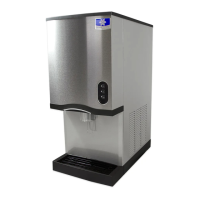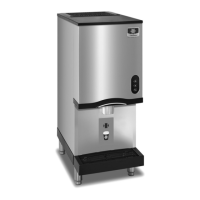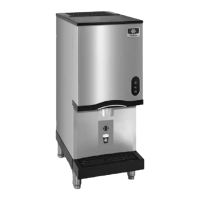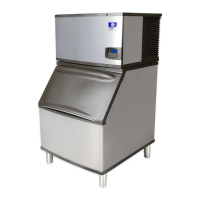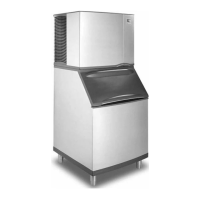–176–
Cycle Times/24-Hour Ice Production/
Refrigerant Pressure Charts
These charts are used as guidelines to verify correct
ice machine operation.
Accurate collection of data is essential to obtain the
correct diagnosis.
Refer to “OPERATIONAL ANALYSIS CHART” for
the list of data that must be collected for refrigeration
diagnostics. This list includes: before beginning
service, ice production check, installation/visual
inspection, water system checklist, ice formation
pattern, safety limits, comparing evaporator inlet/
outlet temperatures, cool vapor valve analysis,
discharge and suction pressure analysis.
Ice production checks that are within 10% of the
chart are considered normal. This is due to
variances in water and air temperature. Actual
temperatures will seldom match the chart exactly.
Zero out manifold gauge set before obtaining
pressure readings to avoid misdiagnosis.
All pressure readings are taken at the ice machine
head section. Connect Manifold gauge set at the
suction and liquid line shut-off valves to obtain
pressure readings Pressures taken at the
condensing unit will vary with line set length,
ambient, exposed line set etc. and will not match the
published pressures. Do not use the receiver
service valve to obtain high side pressures.
Discharge and suction pressure are highest at the
beginning of the cycle. Suction pressure will drop
throughout the cycle. Verify the pressures are within
the range indicated.
During low ambient conditions, it is normal for the
head pressure control valve to hunt (fluctuate up
and down) on CVD condensing units. Hunting varies
by model and ambient temperature, but generally
settles out within the first 6 minutes of the freeze
cycle.
